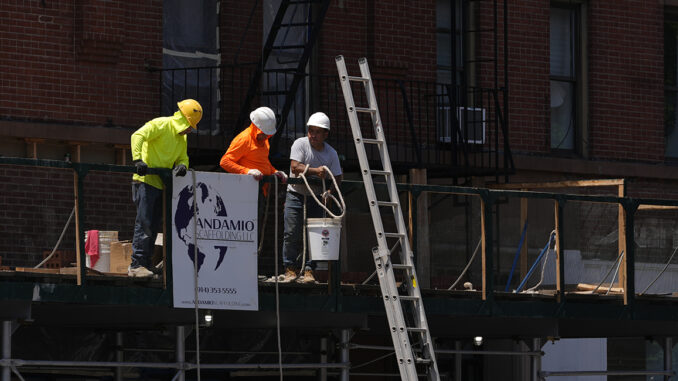
WASHINGTON, D.C. — U.S. hiring decelerated sharply last month due to high interest rates as employers added a weak 114,000 jobs.
Friday’s Labor Department report showed a drop from the 179,000 jobs created in June. Forecasters had expected to see 175,000 jobs in July. The unemployment rate rose to 4.3%.
The economy has proven unexpectedly sturdy despite the Federal Reserve’s campaign to tame inflation with high interest rates. The Fed raised its benchmark rate 11 times in 2022 and 2023, taking it to a 23-year high. However, the higher borrowing costs are taking a toll.
From January through June this year, the economy has generated a solid average of 222,000 new jobs a month, down from an average of 251,000 last year, 377,000 in 2022 and a record 604,000 in 2021 when the economy bounded back from COVID-19 lockdowns.
The economy is weighing heavily on voters’ minds as they prepare for the presidential election in November. Many are unimpressed with the past three years’ strong job gains and exasperated by high prices. Two years ago, inflation hit a four-decade high. The price increases eased, but consumers still pay 19% more for goods and services than before inflation first heated up in spring 2021.
The June jobs report, though stronger than expected, came with blemishes. For one thing, Labor Department revisions reduced April and May payrolls by a combined 111,000. That meant monthly job growth averaged 177,000 from April through June, the lowest three-month average since January 2021.
What’s more, the unemployment rate has risen for the past three months. If it inches up unexpectedly in July — to 4.2% instead of remaining at 4.1% as forecast — it will cross a tripwire that historically has signaled an economy in recession.
This is the so-called Sahm Rule, named for the former Fed economist who created it: Claudia Sahm. She found that a recession is almost always underway if the unemployment rate (based on a three-month moving average) rises by half a percentage point from its low of the past year. It’s been triggered in every U.S. recession since 1970. And it’s had only two false positives since 1959; in both cases — in 1959 and 1969 — it was just premature, going off a few months before a downturn began.
Still, Sahm, now chief economist at the investment firm New Century Advisors, said that this time “a recession is not imminent” even if unemployment crosses the Sahm Rule threshold.
Many economists believe the rising unemployment rates reveal an influx of new workers into the American labor force who sometimes need time to find work rather than a worrisome increase in job losses.
“Labor demand is slowing,” said Matthew Martin, a U.S. economist at Oxford Economics, but companies are not laying off workers in large numbers, which reduces the odds of a negative feedback loop of rising unemployment leading to income loss, reduction in spending and more layoffs.
Indeed, new Labor Department data this week showed that layoffs dropped in June to the lowest level in more than a year and a half.
America’s job numbers have been unsettled by an unexpected surge in immigration — much of it illegal — over the past couple of years. The new arrivals have poured into the American labor force and helped ease labor shortages across the economy — but not all of them have found jobs right away, pushing up the jobless rate. Moreover, people who have entered the country illegally are less inclined to respond to the Labor Department’s jobs survey, meaning they can go uncounted as employed, notes Oxford’s Martin.
Nonetheless, Sahm remains concerned about the hiring slowdown, noting that a deteriorating job market can feed on itself.
“Once you have a certain momentum going to the downside, it often can get going,” Sahm said. She says the Sahm rule is “not working like it usually does, but it shouldn’t be ignored.”
Sahm urged Fed policymakers to preemptively cut their benchmark interest rate at their meeting this week, but they chose to leave it unchanged at the highest level in 23 years.
The Fed’s interest rate hikes led to inflation falling — to 3% in June from 9.1% two years earlier. However, it remains above the Fed’s 2% target, and policymakers want to see more evidence that it’s continuing to come down before they start cutting rates. Still, they are widely expected to make the first cut at their next meeting in September.
